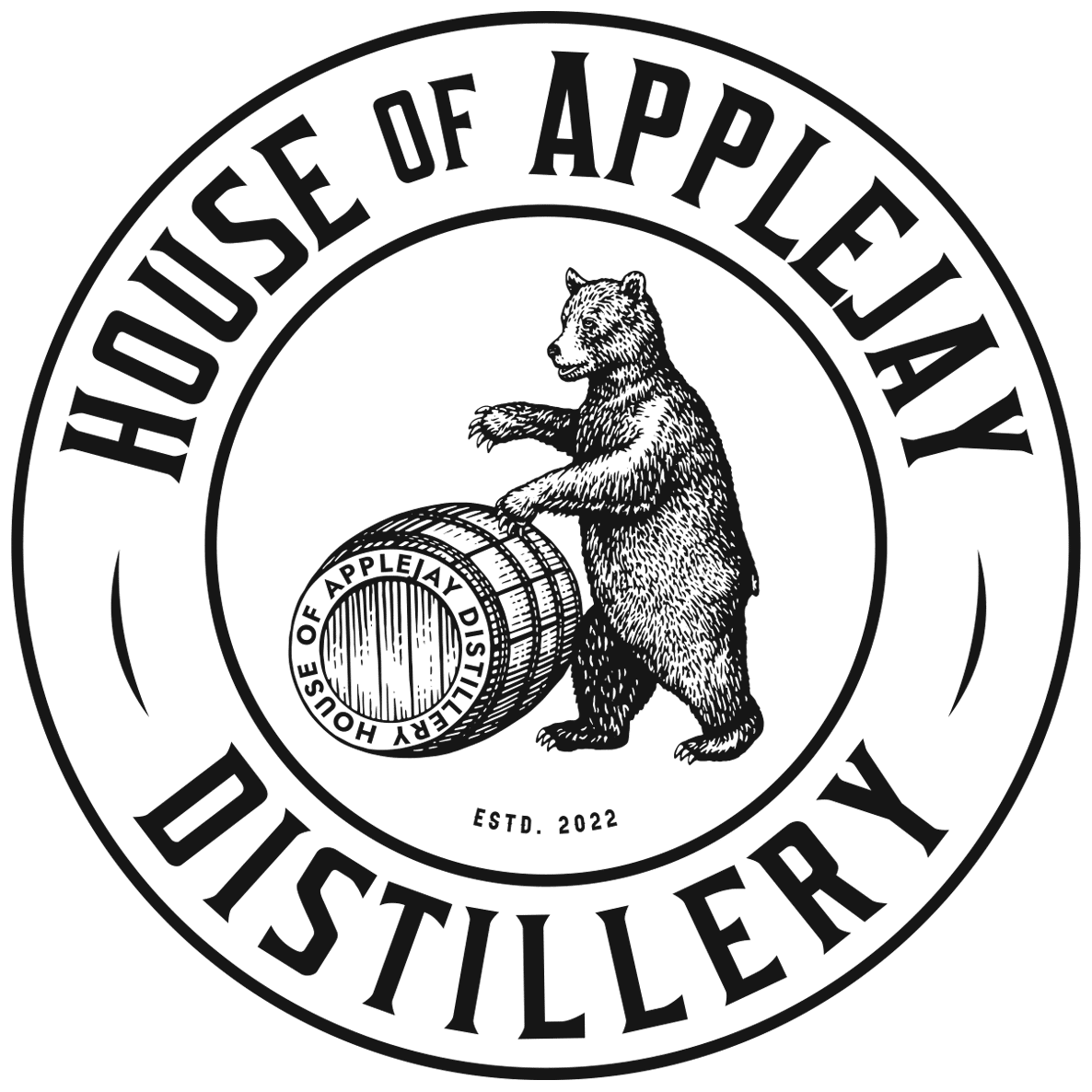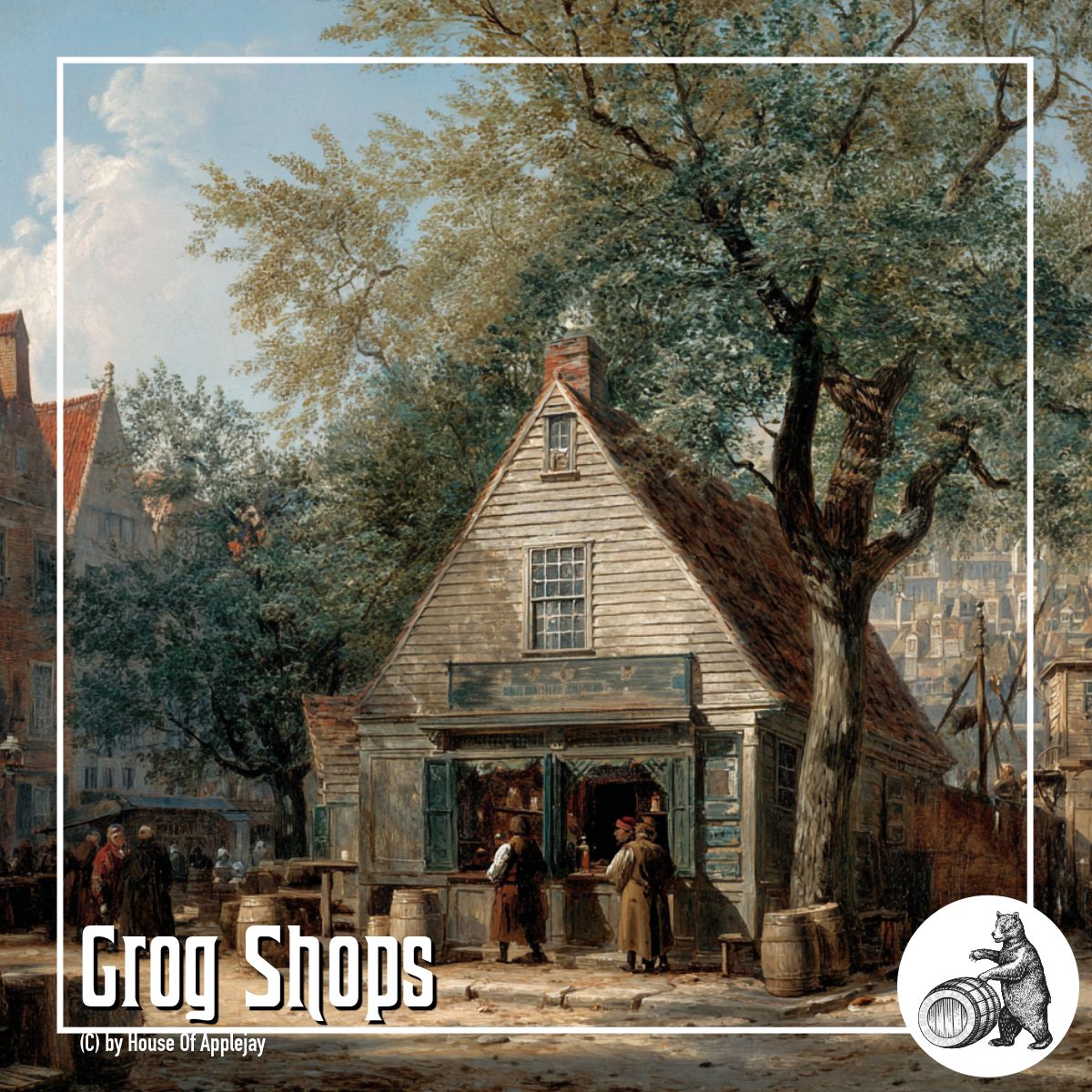Grog Shops
Grog Shops in Colonial American Ports
Grog shops were essential to the cultural and economic fabric of colonial America’s port cities. These informal establishments, often located near bustling wharves and shipyards, served as lively hubs where sailors, dockworkers, and laborers gathered for cheap drinks, camaraderie, and news exchange. Found in cities like Boston, Charleston, and Salem, grog shops played a crucial role in the maritime economy and culture, providing a meeting place for the working class and contributing to the spread of news and trade information. Despite their importance, their unlicensed operations and rowdy reputation drew criticism from authorities, leading to a decline in their influence by the late 18th century. Below, we explore the origins, role, criticisms, and lasting legacy of grog shops in colonial America.
Origins of Grog Shops
The term grog first appeared in 1740, originating from British Admiral Edward Vernon, who ordered that rum rations for Royal Navy sailors be diluted with water to curb drunkenness. Vernon’s nickname, “Old Grogram,” was derived from his grogram cloak, and it became synonymous with the diluted drink. By the mid-18th century, grog had become a staple in American port cities, fueled by the transatlantic trade that brought molasses from the Caribbean to New England, where it was distilled into rum.
Unlike formal taverns, which served wealthier clientele and offered meals and lodging, grog shops were informal, unlicensed establishments that catered primarily to the working-class, including sailors, dockworkers, and laborers. Located near port areas, grog shops offered easy access to these workers, providing a social space where they could hire crews, exchange news, and share sea stories. By the 1750s, grog shops were integral to the maritime economy, functioning as informal labor exchanges and centers of communication.
Social and Cultural Significance
Grog shops were vibrant, multicultural spaces where sailors from Europe, Africa, and the Caribbean mingled with local laborers. These interactions contributed to a unique maritime culture that blended European and African drinking customs, creating a shared identity among seafaring communities. The shops were filled with sea shanties, tales of distant voyages, and slang from across the globe, reflecting the diverse backgrounds of their patrons.
The informal nature of grog shops allowed for greater cultural exchange, and their lively, sometimes rowdy atmosphere contributed to the sense of camaraderie and solidarity among sailors enduring the hardships of maritime life. Grog shops were not only places to drink but also social and cultural touchstones, fostering bonds among people from various walks of life.
Criticisms and Tax Evasion
Grog shops, however, were frequently criticized by colonial authorities and moral reformers. In 1750, a Bostonian lamented that “Dram-Shops and Taverns” had “multiply’d beyond all Bounds,” becoming “Nurseries of Vice and Debauchery” that “directly lead to the Ruin of Society.” Similarly, a Virginia minister in 1751 described grog shop patrons as “lazy,” “dissolute,” and “the very Dreggs of the People.” These critiques reflect broader concerns about the social and moral effects, which were seen as detrimental to colonial society.
Moreover, the unlicensed nature of grog shops allowed them to evade licensing fees and alcohol taxes, which were crucial revenue sources for colonial governments. Licensed taverns were subject to oversight by local authorities, who ensured compliance with regulations and collected fees. Grog shops, operating outside these structures, denied governments their rightful revenue, prompting regulatory crackdowns, particularly in cities like Boston. These unlicensed establishments contributed to social disorder, making them a prime target for authorities seeking to restore control.
Grog Shops in Daily Life
A typical grog shop was a modest, dimly lit space furnished with wooden benches, barrels of rum or ale, and tin or pewter mugs. The atmosphere was lively and often chaotic, with patrons swapping sea stories, singing shanties, and debating current events. Some grog shops offered simple snacks like hardtack or dried fish, but alcohol was the main attraction. Grog was mixed on-site, with recipes varying by location and proprietor. Prices were low, catering to sailors and laborers with modest wages.
The rowdy nature of these establishments, combined with a transient population of sailors and dockworkers, often led to fights. Despite the disorder, grog shops played a vital role in maintaining morale among men far from home and fostered a sense of solidarity and shared purpose.
While specific grog shops are rarely documented due to their informal nature, certain taverns likely served similar functions. For example, the Green Dragon Tavern in Boston, established in 1654, became a hub for sailors, dockworkers, and revolutionary figures like the Sons of Liberty. Often referred to as the “headquarters of the American Revolution,” this tavern likely served grog to its diverse clientele. Another notable establishment was the Bunch of Grapes Tavern, also in Boston, which catered to merchants, sailors, and patriots, offering affordable drinks in a manner similar to grog shops.
These taverns, located near wharves, served the same social and economic functions as grog shops, blending the roles of social gathering spaces, labor exchanges, and community centers.
Legacy of Grog Shops
By the late 18th century, the growth of American cities and the tightening of alcohol regulations led to the decline of grog shops. Their unlicensed status and association with vice made them vulnerable to crackdowns, as colonial authorities sought to capture missed tax revenue and curb public disorder. Many grog shops were absorbed into licensed taverns or replaced by saloons as the demand for stricter regulation grew.
Despite their decline, the term grog remained in the American vernacular, synonymous with strong drink. The communal, social spirit of grog shops lived on in later waterfront bars and taverns, ensuring their place in the legacy of early American drinking culture
The Distilling Culture
BLOG
Embark on a global journey, and you’ll find that cultures possess tales that harken back to their ancient beginnings of distillation, brewing, and winemaking.
info@houseofapplejay.com
67 Fowler St, Bldg B, East Ellijay, GA 30540

